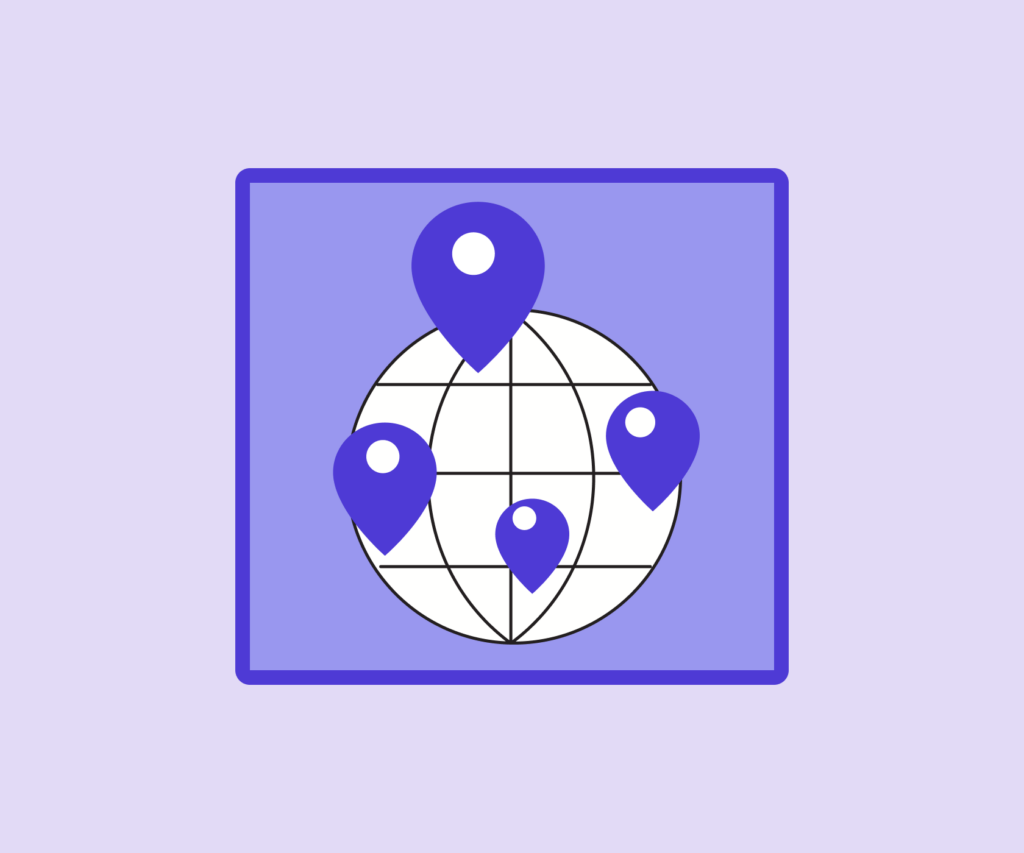6 Lessons in Localization: How Leaders Tackle Global Learning
Discover the lessons learned from global localization leaders and the unique, culturally relevant solutions to streamline workflow and empower global learners.

True localization goes beyond word-for-word translation
Remember the last time someone told you to break a leg? Maybe you were just about to step on stage for the high school play. Or maybe you were moments away from defending your Master’s thesis. Whatever the occasion, you didn’t take the command seriously. North American English speakers immediately recognize this common idiom as an ironic message of good luck.
But what happens when you translate an idiom word-for-word into another language? An invitation to fracture a femur—during an activity that requires an immense amount of coordination and focus, no less—would be confusing at best and at worst, perceived as a threat.
Similarly, global leaders know that translating training content for their international learners and partners is not enough. True localization is key to providing culturally relevant adaptation of all content, including not just language but also multimedia elements. While many organizations scramble to find ways to engage their learners across the globe, a select few have found a clear path forward.
This post outlines 6 lessons from global leaders who are leading the way in localization best practices. We’ll explore the unique challenges they faced and the solutions they found to deliver culturally relevant learning experiences to a global workforce.
Key Takeaways
- Global localization leaders recognize that culturally relevant content for global employees and partners is imperative to organizational growth.
- Localizing content breaks down accessibility barriers and empowers global partners with the confidence and skills they need for professional growth.
- Localization programs offer a simplified workflow, human-guided AI assistance, and cost-effective scalability to help organizations save time and money without sacrificing quality.
6 lessons from global leaders in localization
According to a recent study by the Association for Talent Development, 86% of organizations agree that localizing training content makes it more effective. However, that doesn’t mean businesses automatically translate material. Authentically connecting with learners across diverse regions—for any organization—takes time, resources, and talent. For many businesses, it’s simply not a priority, and training quality suffers.
Microsoft and Intermedia Cloud Communications saw an opportunity to improve performance globally with localized learning. These global leaders have forged a path for other multinational organizations and learned invaluable lessons on their mission to empower their employees, no matter where they’re from or what language they speak.
Here’s what they learned:
1. Cultural relevance is critical
Localized training content resonates with learners when it accurately reflects their experience and point of view. A single cultural misstep can alienate learners, and it’s not just language that matters. Visuals, color schemes, tone, and symbols should all be localized to respect cultural norms. Scaling internationally and growing effectively in global markets depends on cultural sensitivity.
🗣️Words of wisdom: “Regardless of where a partner lives, regardless of their brand, it’s critical that we equip all our partners with the training they need. Providing the content in their native language is crucial for that.” –Shannon McGinnis, Director of Global Learning and Enablement, Intermedia Cloud Communications
2. Keep content up-to-date
Keeping content relevant ensures your global partners and employees are equally well-equipped to learn and produce, no matter where they live and work. This not only improves overall business performance but also proves your dedication to providing the same opportunity for growth to all of your learners.
🗣️Words of wisdom: “We knew we needed to localize our full suite of courses in all key languages to give partners in every country the same experience they would have if they were in the U.S.” –McGinnis
3. Global expansion requires global support
If you expect your business to expand on a global scale, you need to provide global support. Localization efforts show that your organization values international partners, building a sense of belonging and support across the globe. Creating culturally sensitive learning experiences demonstrates a global mindset, fostering engagement, trust, and high-level performance across diverse teams.
🗣️Words of wisdom: “Regardless of the team we work on, without localizing our training, we cannot skill our learners and achieve our target business objectives.” –Viorel Jigman, Senior Learning Manager, Microsoft
4. Localization increases empowerment
It is imperative to remove barriers for their learners around the world. Adapting content to each learner’s cultural context increases long-term retention and boosts learner confidence. Improved learning outcomes lead to a more skilled and competent workforce. In turn, global employees are empowered to continue learning, growing, and reskilling without barriers.
🗣️Words of wisdom: “We need to consider language as one of the potential barriers to taking our training. Being able to localize training, and do so at a faster pace, removes a major accessibility barrier for our learners.” –Jigman
5. Simplify your workflow
Collaborating with both regional teams and in-house subject matter experts to publish localized content is no easy task. Translation, validation, and review takes time, but it doesn’t have to take months. Your localization process should be centralized within one system, where all key stakeholders can view and manage content before publishing.
Even better, find a localization program that can manage multiple language versions of a course as a single item, giving you the flexibility to create, localize, and distribute courses all within a single platform.
🗣️Testimony from the field: “The speed-to-market is significantly better with Articulate Localization than it was with our previous approach.” –McGinnis
6. Balance machine and human translation
AI-powered tools are capable of translating courses into 70+ languages—including right-to-left content—all within a matter of seconds. Still, human-centered review is a must, especially when implementing and reviewing cultural adaptations. To that end, it’s essential to implement rigorous quality control and numerous feedback mechanisms to ensure courses meet cultural standards.
🗣️Testimony from the field: “It worked, but it was a challenging process—painful at times.” –Jigman, speaking to the difficulty of the localization process before implementing machine translation

Localization in action: two global case studies
Let’s take a closer look at how these two global localization leaders found solutions to their unique learner and partner challenges.
Microsoft’s global customer support teams
With over 220,000 employees worldwide in over 190 countries, Microsoft prides itself on delivering exceptional learning experiences to its global teams. Central to this mission is its Customer Service and Support (CSS) team, supporting local markets in Asia, Latin America, and other regions.
The Problem: While Microsoft has been localizing its training content for years, it needed a faster process to accommodate its CSS team and rapidly growing global customer base.
The Solution: Switching to the Articulate 360 Platform cut down the end-to-end localization process from 30 days to just 6 and has since enabled them to localize nearly 200 courses into 5 languages.
Furthermore, data privacy—an increasing concern for organizations with a global digital footprint—wasn’t an issue. Viorel Jigman, Microsoft’s Senior Learning Manager, said Articulate handled all of the “processes internal teams needed to review and vet the Localization tool to ensure our data would be properly handled.”
Intermedia’s worldwide network of reseller partners
Intermedia Cloud Communications offers a Worry-Free Experience™ for its users, helping over 150,000 businesses connect better through voice, video conferencing, chat, SMS, email, and more. While they do sell directly to customers, Intermedia relies heavily on its network of 7,500+ worldwide reseller partners.
The Problem: Intermedia needed a cost-effective way of creating in-depth product and process training that catered to each of its reseller partners’ unique regional needs.
The Solution: Switching to Articulate’s Localization accelerated speed-to-market by weeks, all for a third of the cost of their previous third-party translator.
Intermedia’s Director of Global Learning and Enablement, Shannon McGinnis, noted, “I was looking for better, faster, and more cost-effective ways to translate when Articulate Localization came along.” Mission accomplished: In just one week, they were able to validate, update, and publish 80+ courses—a task that would have taken their previous provider several months, and much more money, to complete.
Conclusion
Global leaders know that global learning requires global support. With employees and partners around the world, training content can’t just be translated word-for-word. Truly empowering global partners requires an effective localization process, one that employs culturally relevant adaptations while maintaining cost-effective scalability. Removing all barriers for global learners is a must, and doing so boosts retention, confidence, and trust in your organization.
Looking for an effective e-learning localization solution? Check out these proven strategies for training a global workforce, and start your free trial of the Articulate 360 platform today to localize your courses 3x faster!
You may also like

Your Guide to Getting a Budget for Your E-Learning Project
Master e-learning budget planning with our four-part guide. Learn to identify needs, secure funding, and manage resources effectively throughout your project.

